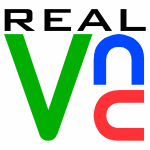|
Remote control software such as VNC has a variety of uses. It allows
a person at a remote computer to assume control of another computer
across a network, as if they were sitting in front of the other
computer.
For the individual user,
one common scenario is using VNC to help troubleshoot the computer
of a distant less-technically-savvy relative. In other words, sitting
at your desk in Baltimore, you could use VNC to take control of your
mother's PC in London and show her how to install and use some new
software package by actually doing it yourself.
For the business user, VNC can be used to provide a flexible
hot-desking and road-warrior environment by allowing employees to
access their office desktop and server machines from any machine in
the company's offices or from other remote sites, regardless of the
type of computers involved at either end. An equally popular
business application of VNC is in remote system administration,
where VNC is used to allow administrators to take control
of employee machines to diagnose and fix problems, or to access
and administer server machines without making a trip to the console.
VNC can also be used in educational contexts, for example to allow a
distributed group of students simultaneously to view a computer
screen being manipulated by an instructor, or to allow the instructor
to take control of the students' computers to provide assistance.
Of course, as these examples illustrate, the variety of uses of VNC
is really as diverse as the number of VNC users, a number which is
big and growing all the time!
You can download a copy of VNC here.
|

